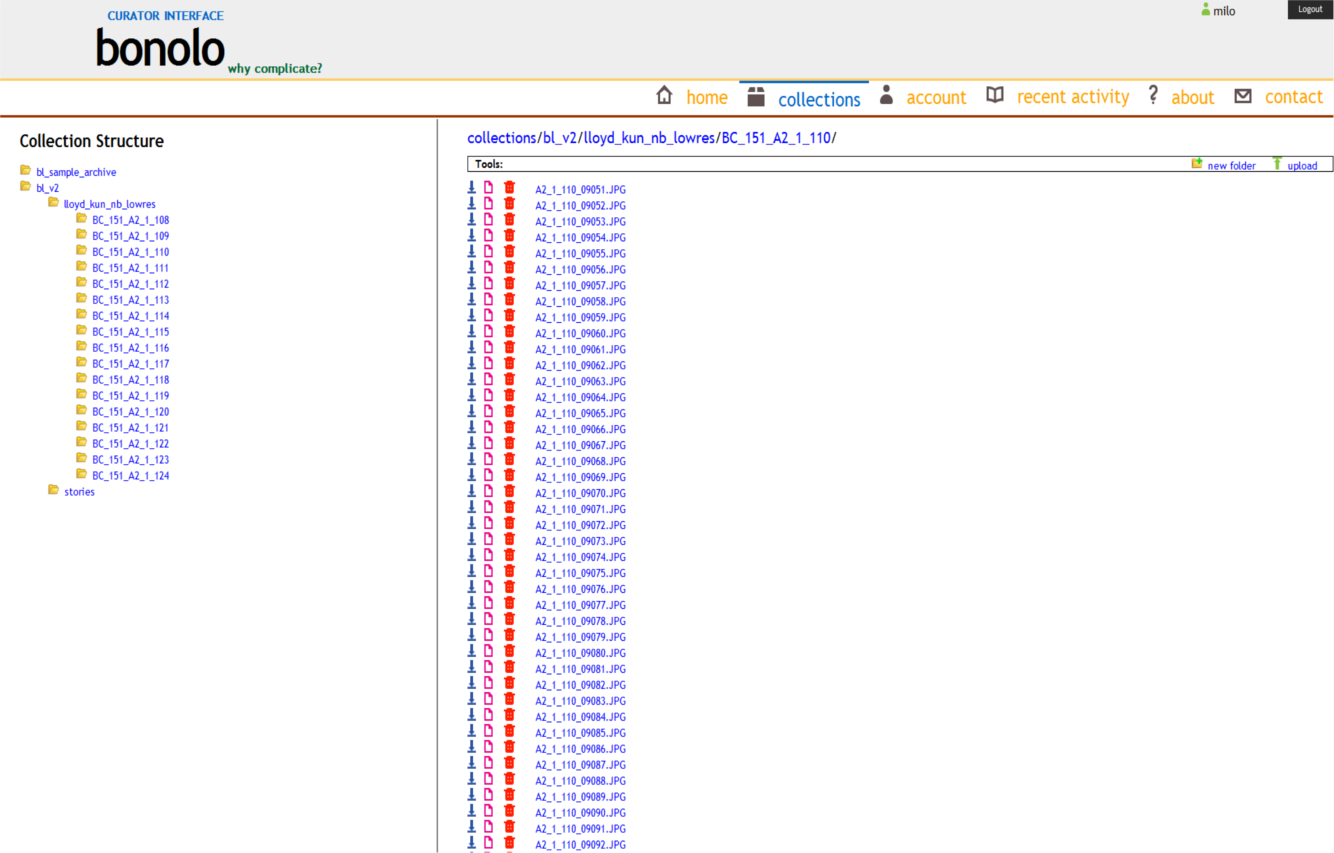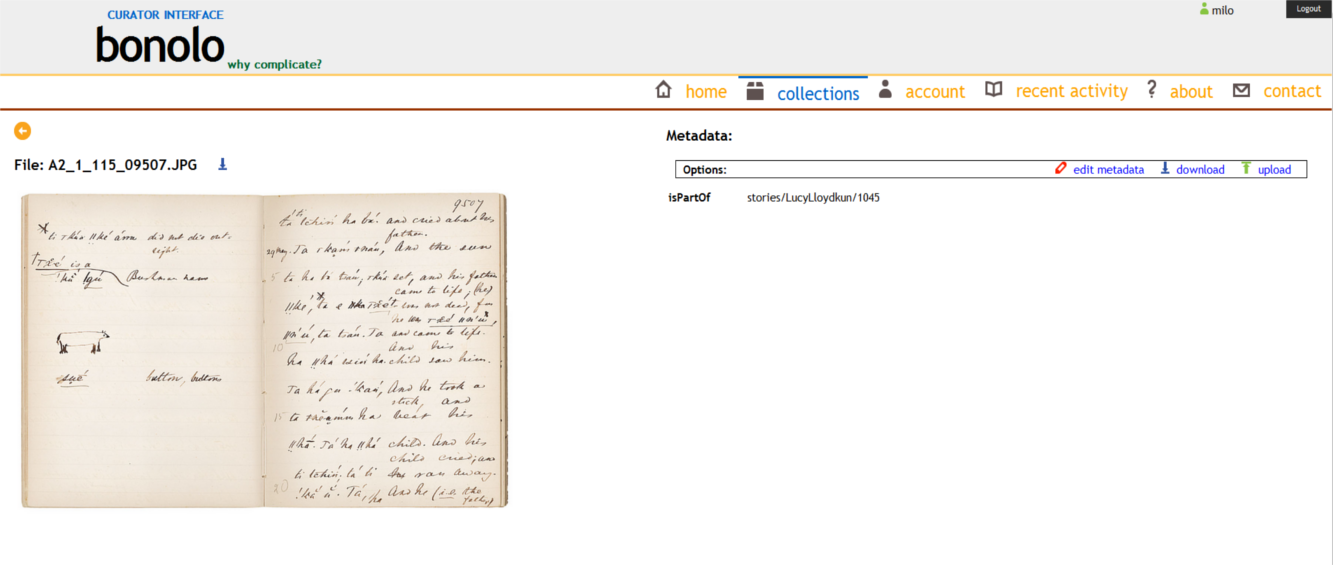Design & Implementation
Technology & Tools
The back-end of the Curator Interface was created using Java Servlets. The use of Java Servlets allows functionality to be added to the Website through Java classes and libraries.
The front-end of the Curator Interface was created using a combination of HTML, Cascading Style Sheers (CSS), Java Server Pages (JSP), Javascript and AJAX. This combination allows a Web-interface comprised of dynamic pages to be constructed.
Apache Tomcat version 7 was used as a server application to deploy the Curator Interface. SQLite was used as a tool to create and manage a SQL database containing details about curators who had registered with the Curator Interface.
Functionality
The following functionality is provided by the Curator Interface:
The Curator Interface will adjust the rights of its users to account for any changes made to the collection outside the Curator Interface (i.e. directly to the file hierarchy on the server)
The following screenshots show the navigation and file viewing of the final system:


Development
The development of the Curator Interface took place over three iterations. Each iteration consisted of time allocated to the design, implementation and evaluation of the system. This approach was adopted as it allowed the system to improve on areas of weakness from the previous iteration while adding more features and functionality. The iterative development of the Curator Interface is illustrated in the following figure:
